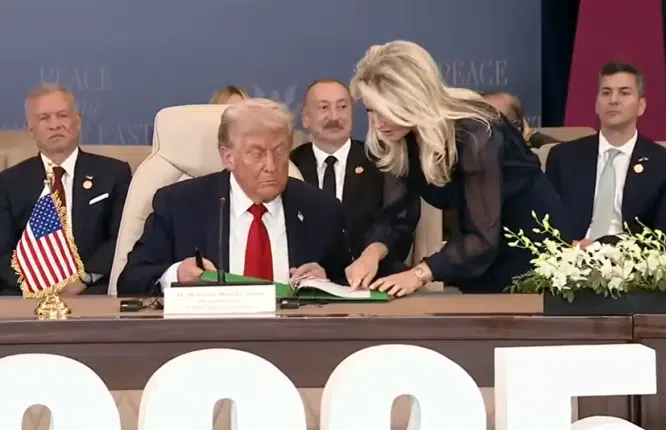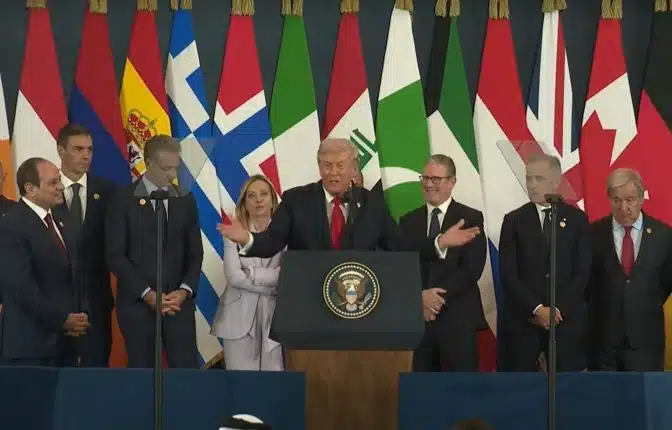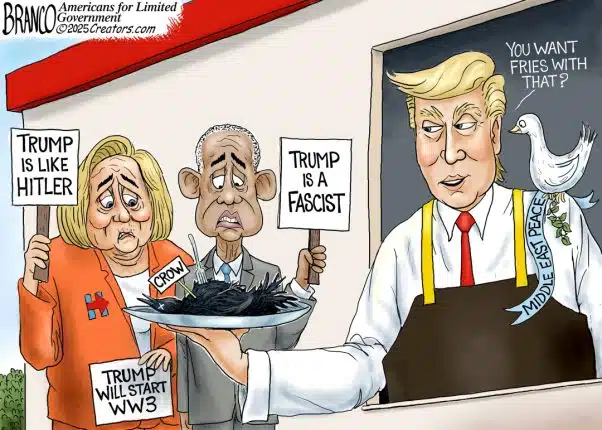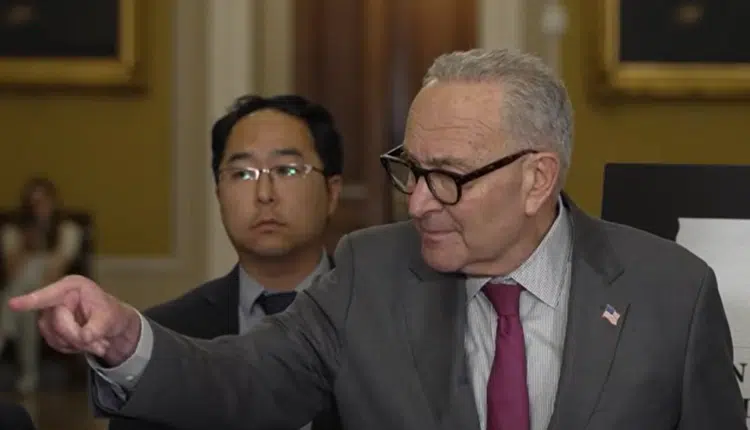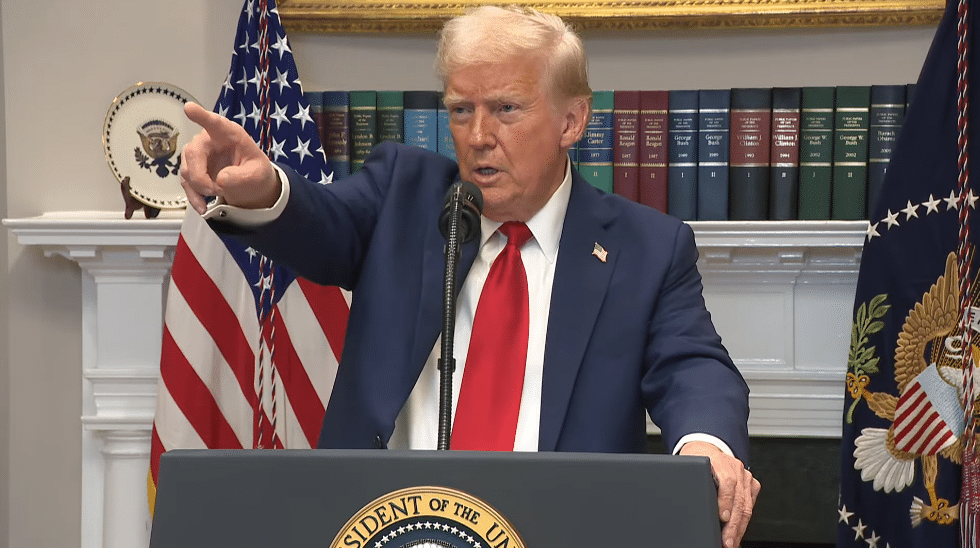
President Donald Trump in a Feb. 21 proclamation entitled “America First Investment Policy” that seeks to assert American dominance particularly in advanced technology sectors including artificial intelligence (AI), by incentivizing investment in the U.S., restricting it from the People’s Republic China (PRC) and restricting investment by China and other foreign adversaries in the U.S.
Stating the policy in a very straight forward manner, the goal is clearly to keep and move the most advanced AI research and development to the U.S.: “It is the policy of the United States to preserve an open investment environment to help ensure that artificial intelligence and other emerging technologies of the future are built, created, and grown right here in the United States.”
That includes the chips used for AI, including those made by Nvidia, which are mostly made in Taiwan at the moment. Considering the goal outlined in the President’s policy is to keep the technology away from China, Taiwan appears to be a rather precarious geographic location for the world’s foremost and dangerous technologies, creating high potentials for espionage and/or military capture at some point in the not so distant future — and clearly poses a national security risk if the U.S. lacks its own developed supply chain.
Towards that end, the Trump investment proclamation takes several steps to expedite the development of high technologies in the U.S. including by incentivizing investment here from allies and discouraging it elsewhere.
For example, environmental reviews for all new facilities will be sped up: “expedite environmental reviews for any investment over $1 billion in the United States.”
There will be major capital controls imposed on technology investment, again, rewarding U.S. investment and punishing investment in adversary country economies: “The United States will establish new rules to stop United States companies and investors from investing in industries that advance the PRC’s national Military-Civil Fusion strategy and stop PRC-affiliated persons from buying up critical American businesses and assets, allowing only those investments that serve American interests.”
It will restrict Chinese investment in the U.S. as well including through the Committee on Foreign Investment in the United States (CFIUS) by “restrict[ing] PRC-affiliated persons from investing in United States technology, critical infrastructure, healthcare, agriculture, energy, raw materials, or other strategic sectors.” It will also restrict the purchase of U.S. farmlands and other real estate near sensitive installations.
President Trump’s proclamation also promises economic sanctions for anyone investing in China and other foreign adversary military capacity that threatens U.S. national security, promising to “use all necessary legal instruments to further deter United States persons from investing in the PRC’s military-industrial sector. These may include the imposition of sanctions under the International Emergency Economic Powers Act (IEEPA) through the blocking of assets or through other actions…”
In the process, special attention will be given to advanced technologies as the administration “consider[s] new or expanded restrictions on United States outbound investment in the PRC in sectors such as semiconductors, artificial intelligence, quantum, biotechnology, hypersonics, aerospace, advanced manufacturing, directed energy, and other areas implicated by the PRC’s national Military-Civil Fusion strategy.”
Given all of the above, any new restrictions at this point appear to be a fait accompli and merely a matter of what the restrictions will be rather than whether there will be new restrictions.
For example, the 1984 U.S.-China tax treaty may be suspended, and so too might permanent normal trade relations with China, established in 1999 and 2000: “the PRC’s admission to the World Trade Organization and the related undertaking by the United States to accord unconditional Most Favored Nation treatment to goods and services of the PRC, led to the deindustrialization of the United States and the technological modernization of the PRC military. We will seek to reverse both those trends.”
And it will restrict the availability of own pieces of Chinese companies in the U.S. including “determine[ing] if adequate financial auditing standards are upheld for companies covered by the Holding Foreign Companies Accountable Act” and restricting pension investments into Chinese companies by “restor[ing] the highest fiduciary standards as required by the Employee Retirement Security Act of 1974, seeking to ensure that foreign adversary companies are ineligible for pension plan contributions…”
Finally, to facilitate production and building of these facilities in the U.S. immediately, Trump is invoking the Defense Production Act, stating, “the Secretary of the Treasury, in consultation with the Secretary of State, the Secretary of Defense, the Secretary of Commerce, the United States Trade Representative, and the heads of other executive departments and agencies (agencies) as deemed appropriate by the Secretary of the Treasury, and with respect to the authorities of CFIUS in coordination with the members thereof, shall take such actions, including the promulgation of rules and regulations, to support all powers granted to the President by IEEPA, section 721 of the Defense Production Act of 1950, as amended, and other statutes to carry out the purposes of this memorandum.”
So, some of these items will require a review, and others — such as the President’s AI Action Plan — are inviting public comment due March 15 on how best to foster U.S. dominance in these advanced technologies, while others appear as immediate actionable items to facilitate production immediately.
Vice President J.D. Vance previewed some of these actions at his speech at the Artificial Intelligence Action Summit in Paris, France on Feb. 11, stating in part, “The United States of America is the leader in AI, and our administration plans to keep it that way. The U.S. possesses all components across the full AI stack, including advanced semiconductor design, frontier algorithms, and, of course, transformational applications. Now, the computing power this stack requires is integral to advancing AI technology. And to safeguard America’s advantage, the Trump Administration will ensure that the most powerful AI systems are built in the U.S. with American designed and manufactured chips.”
And he encouraged foreign investment in the U.S.: “America wants to partner with all of you, and we want to embark on the AI revolution before us with a spirit of openness and collaboration.”
That included getting tough on China and foreign adversaries, stating, “we’ve also watched as hostile foreign adversaries have weaponized AI software to rewrite history, surveil users, and censor speech. This is hardly new, of course. As they do with other tech, some authoritarian regimes have stolen and used AI to strengthen their military, intelligence, and surveillance capabilities; capture foreign data; and create propaganda to undermine other nations’ national security…This administration will block such efforts, full stop. We will safeguard American AI and chip technologies from theft and misuse, work with our allies and partners to strengthen and extend these protections, and close pathways to [adversaries] attaining AI capabilities that threaten all of our people.”
These are very clear signals by the Trump administration that it perceives a potential existential threat by these emerging technologies, but also sees an opportunity to ensure that the U.S. is able to quickly take advantage of its capabilities. Unfortunately, that will mean that this technology will be instantly militarized and weaponized with frightening implications for life and liberty. But there is also an upside with the innovation and transformation of the economy that can take place when the peaceful applications are considered. First things first, Trump’s approach appears to be to defend against the dangers.
In other words, Trump is not waiting for the AI or digital equivalent of Pearl Harbor before pivoting U.S. defense technologies’ production away from any reliance on foreign supply chains including Taiwan. Trump is developing a 21st Century industrial policy for domestic production almost overnight since assuming office a month ago, but a very good question, particularly with China’s new DeepSeek model that shows these advancements can and will come quickly, is how quickly the domestic production side of it can and will it get up and running. One thing is for certain, it’s never too late to get started.
Robert Romano is the Vice President of Public Policy at Americans for Limited Government Foundation.



